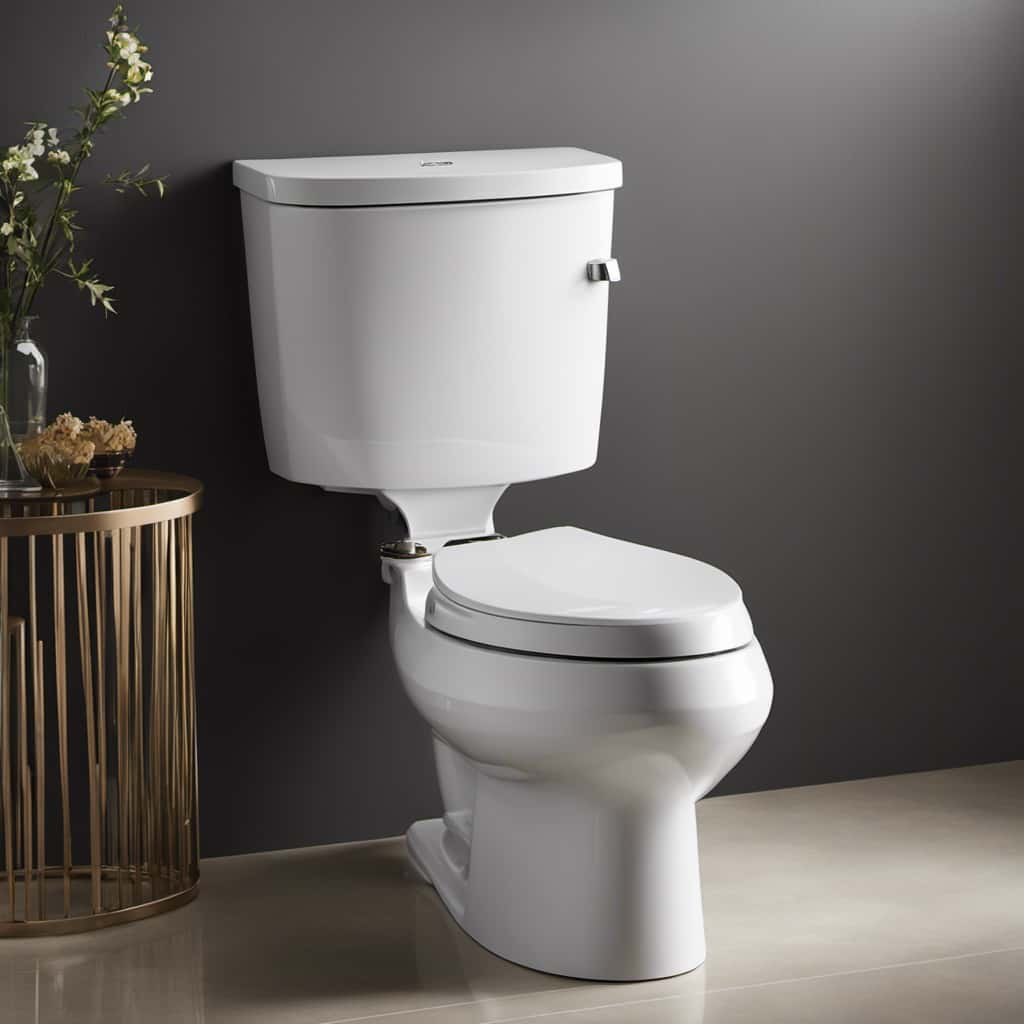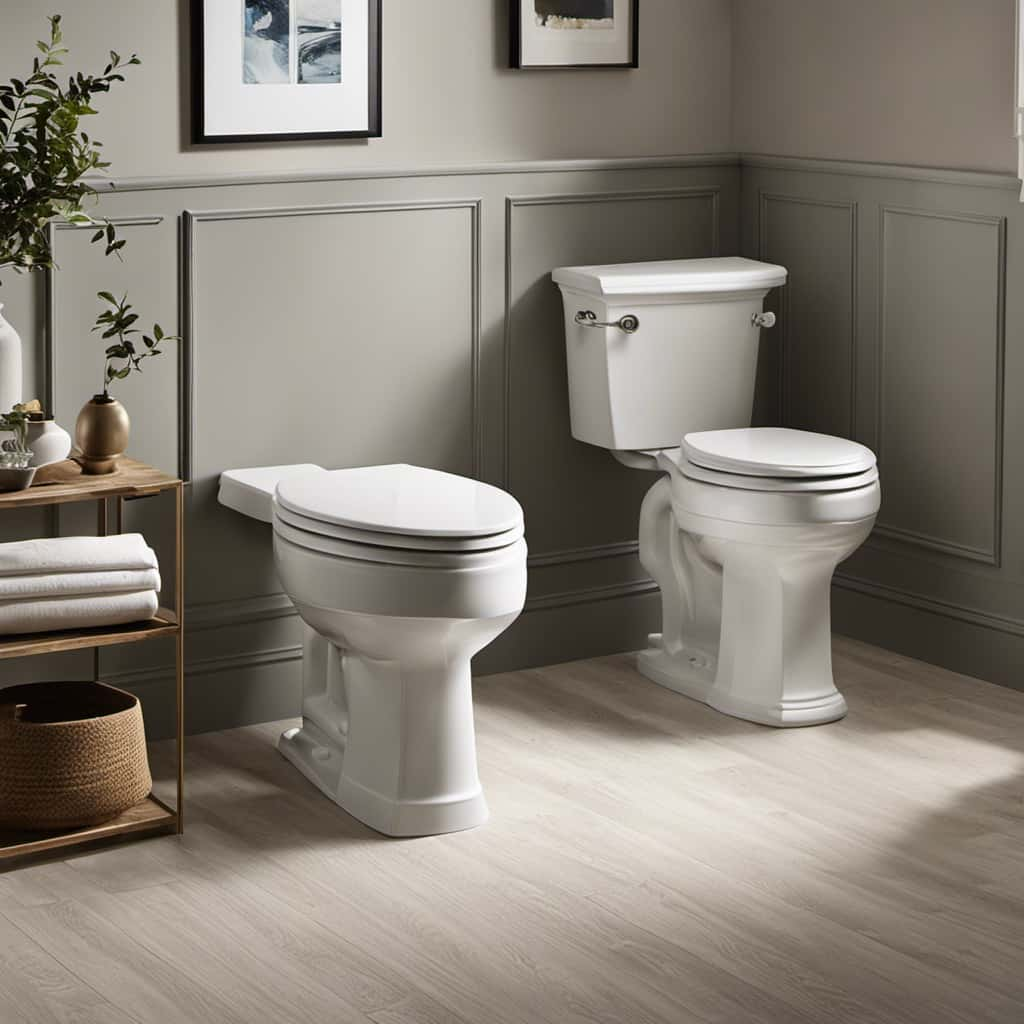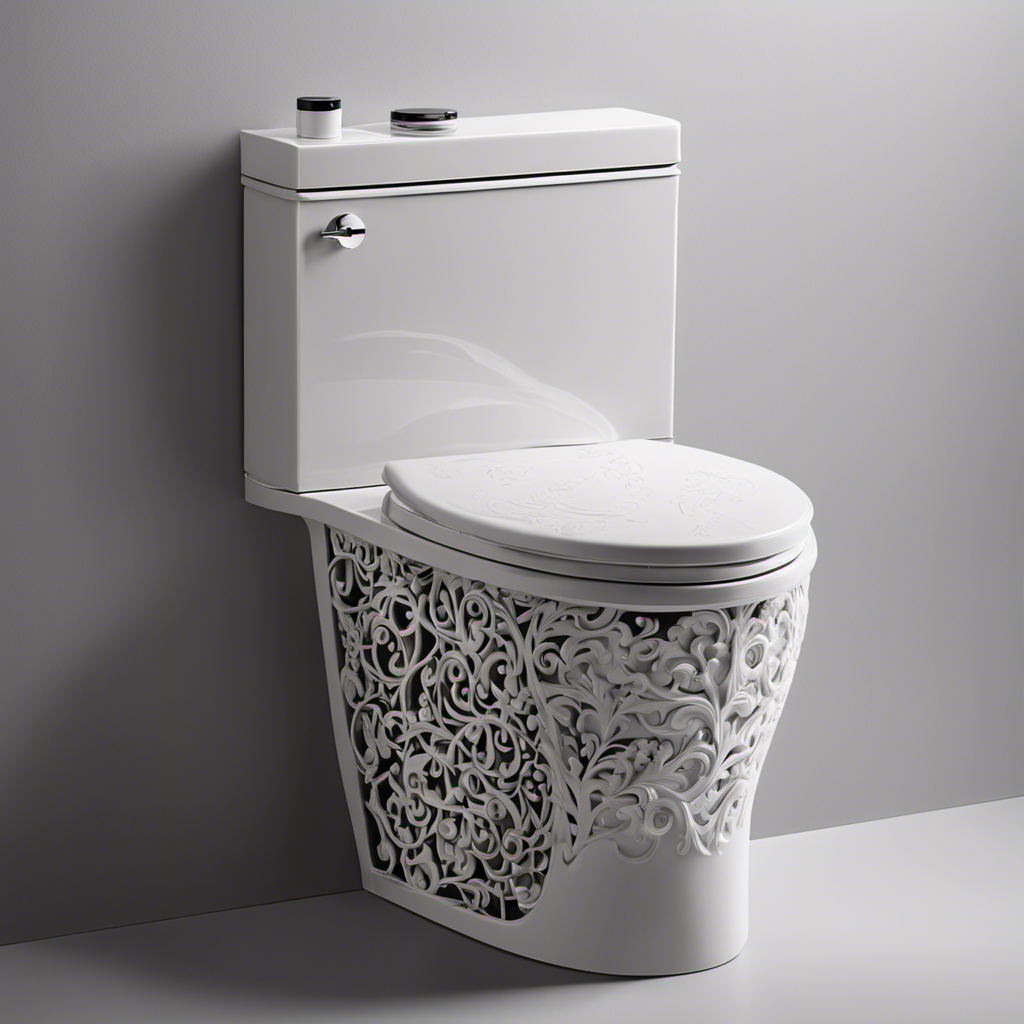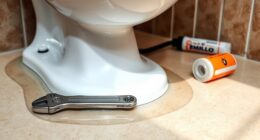We’ve all been there – dealing with a toilet that fills up and drains slowly can be a frustrating experience. But fear not, because we’re here to help you fix it!
In this article, we’ll guide you through the steps to troubleshoot and resolve this common issue.
From checking the water supply valve to cleaning or replacing the fill valve, we’ll provide you with the expert knowledge you need to get your toilet back in working order.
Let’s dive in!

Key Takeaways
- Check and adjust the water supply valve to ensure it is fully open and not causing water pressure issues.
- Use a toilet plunger or a chemical drain cleaner to clear toilet clogs.
- Adjust the float mechanism to ensure proper water level in the toilet tank.
- Inspect and replace the flapper if it is worn or damaged to prevent slow filling and draining.
Check the Water Supply Valve
First, we need to check the water supply valve. Water pressure issues can often be traced back to a faulty or partially closed water supply valve. To ensure proper water flow, locate the valve near the base of the toilet and make sure it’s fully open. If the valve is partially closed, turn it counterclockwise to open it completely.
Additionally, regular plumbing maintenance is essential to prevent water pressure issues. Inspect the supply lines and valves for any leaks or signs of wear and tear. Replace any damaged components promptly to maintain optimal water pressure.
Moreover, periodically cleaning the valve and supply lines can help prevent debris buildup, which can also cause water pressure problems.
Clear Any Clogs in the Toilet Trap
To clear any clogs in the toilet trap, we need to assess the potential blockage and take appropriate action. Here are four steps you can follow to clear the clog:

- Use a toilet plunger: Place the plunger over the drain hole and pump it up and down vigorously. This can help dislodge the blockage and allow the water to flow freely.
- Try a chemical drain cleaner: If the plunger doesn’t work, you can try using a chemical drain cleaner. Follow the instructions on the product carefully to avoid any damage to your toilet or plumbing system.
- Use a plumbing snake: If the clog persists, you can use a plumbing snake to physically remove the obstruction. Insert the snake into the drain and rotate it to break up the clog.
- Call a professional plumber: If all else fails, it may be time to call a professional plumber. They have the tools and expertise to handle stubborn clogs and ensure your toilet is working properly again.
Adjust the Float Mechanism
To adjust the float mechanism, we simply need to locate the float and make the necessary adjustments. The float is a small plastic or metal device that’s connected to the fill valve and controls the water level in the tank.
If the toilet is filling up and draining slowly, there may be a problem with the float mechanism. Common issues with float mechanisms include a float that’s set too low, causing the tank to not fill up enough, or a float that’s sticking, causing the tank to overfill.
To troubleshoot float adjustment, first, check if the float is properly attached to the fill valve. Then, adjust the float by bending the float arm or adjusting the float screw, depending on the type of float mechanism.
Test the toilet by flushing it and checking if the water level is at the desired level.

Inspect and Replace the Flapper
Now let’s move on to inspecting and replacing the flapper, an essential component that can cause a toilet to fill up and drain slowly if it isn’t functioning properly.
Flapper maintenance is crucial to ensure proper water flow and prevent any blockages. Here are four steps to help you inspect and replace the flapper:
- Turn off the water supply: Before starting any work, turn off the water supply to the toilet. Locate the valve near the floor or on the wall behind the toilet and twist it clockwise to shut off the water.
- Remove the tank lid: Lift the tank lid and carefully set it aside. This will give you access to the inner workings of the toilet.
- Inspect the flapper: Take a close look at the flapper. Check for any signs of wear or damage, such as cracks or warping. These issues can prevent it from sealing properly, leading to slow filling and draining.
- Replace the flapper: If you notice any problems with the flapper, it’s time for a replacement. Turn off the water supply completely and detach the old flapper from the chain. Install the new flapper by attaching it securely to the chain and ensuring it sits properly over the drain hole.
Clean or Replace the Fill Valve
Moving on from inspecting and replacing the flapper, let’s now address the importance of cleaning or replacing the fill valve to resolve a toilet that fills up and drains slowly.
The fill valve is responsible for controlling the water flow into the toilet tank. Over time, mineral deposits and debris can accumulate inside the valve, causing it to malfunction.

To clean the fill valve, start by shutting off the water supply to the toilet. Remove the valve cap and use a brush or cloth to clean any buildup.
If cleaning doesn’t solve the issue, it may be necessary to replace the fill valve altogether. When replacing, make sure to choose a valve that’s compatible with your toilet model.
Frequently Asked Questions
How Do I Know if It’s the Water Supply Valve That Is Causing the Toilet to Fill up and Drain Slowly?
We troubleshoot slow toilet drain issues by checking the water supply valve. If the toilet fills up and drains slowly, it may be due to a faulty valve. We recommend inspecting and possibly replacing the valve to resolve the problem.
Is It Possible for a Clog to Occur in the Toilet Trap Even if the Water Is Draining Slowly?
Yes, it is possible for a clog to occur in the toilet trap even if the water is draining slowly. Troubleshooting slow toilet drain can help identify and fix the issue.

What Should I Do if Adjusting the Float Mechanism Doesn’t Solve the Issue of a Toilet Filling up and Draining Slowly?
If adjusting the float mechanism doesn’t fix the issue of a toilet filling up and draining slowly, we may need to examine the flushing mechanism or check for any blockages in the toilet tank.
How Can I Determine if the Flapper Needs to Be Replaced or if It Just Needs to Be Cleaned?
To determine if the flapper needs replacing or cleaning, we can examine its condition and functionality. By inspecting for cracks, tears, or buildup, troubleshooting flapper issues becomes easier.
Are There Any Specific Instructions for Cleaning or Replacing the Fill Valve That I Should Be Aware Of?
When cleaning or replacing the fill valve, it’s important to follow specific instructions. This ensures proper functioning and prevents further issues with the toilet’s slow filling and draining.
Conclusion
In conclusion, fixing a toilet that fills up and drains slowly can be a simple task with the right steps.

By checking the water supply valve, clearing any clogs in the toilet trap, adjusting the float mechanism, inspecting and replacing the flapper, as well as cleaning or replacing the fill valve, you can ensure a properly functioning toilet.
So, don’t let a slow-draining toilet bring you down – follow these steps and enjoy a smoothly running bathroom experience.










